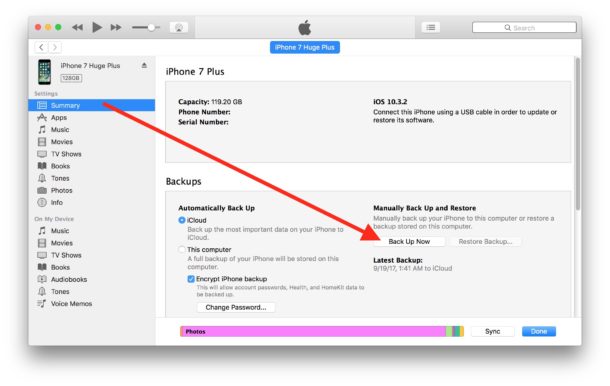
- Mac Software Update Won't Download
- Software Update Doesn't Show Up On Mac Free
- Software Update Doesn't Show Up On Mac Download
- Software Update Not Showing Up On Mac
- Software Update Doesn't Show Up On Mac 2017
Sep 01, 2019 Some update processes will take much longer than others, resulting in a seemingly stuck progress bar. We can verify that the system is still updating by pressing Command + L to bring up the estimated install time. If this doesn’t appear, still let the update sit for a while. Some users have reported their update taking upwards of ten hours. How to Install Mavericks 10.9.2 When It Doesn't Show Up in Software Update There’s a security issue in the last versions of Mac Mavericks 10.9.1 in regard to SSL and verifying the authenticity of a website (which your browser should do automatically). Sep 26, 2018 Another reason could be that your Mac is running an older version of High Sierra (or Sierra, El Capitan, etc.), you should get update notifications but not related to Mojave. Instead, you were prompted to update to the latest subversion. For example, if your Mac is running under 10.13.2, you’ll be prompted to upgrade to 10.13.6. Jan 04, 2013 Keeping the iOS (operating system) software up to date on your iPad is nearly always a good idea. Each major update to iOS (those that are.0 updates) brings a wealth of impressive new features to the iPad. The ‘point updates’ (5.1 or 6.0.2 for example) tend to offer important bug fixes, security patches, and general performance enhancements.
Some Mac users have reported technical issues once they update their OS to the High Sierra Update. To be precise, their App Store feature is not working as it should or at least, as it did before the update. Usually when an app releases its update, it is directly indicated in the App Store, but in this case, you get the update and when you proceed to download it, you get a pop-up showing “No Update Available”. Sometimes, the main culprit could be a ghost update.
Mac OS 10.13 High Sierra Update Features
Apple has wowed its loyal subject, once again, by introducing a new OS update. Beyond the newly enforced automatic security checks on EFI firmware being done each week, this new OS update, the macOS 10.13 High Sierra, comes with cool new features. They include:
Improvements to the Safari Browser – Imagine a browser that stops ad-tracking and auto-playing video media and a broader Spotlight Search in the Mail App. Moreover, when composing emails, the Mail App allows split viewing of the screen and uses over 30% less disk space.
The Photos app has not been left behind in the macOS 10.13 High Sierra update. It has been imbued upon, better sorting tool to boot, accompanied by a new themes courtesy neural networks, and improved Apple devices syncing. Editing in the photos App have been improved as well, the user now has an easier time enhancing the quality of their photos and applying filters without being adept in Photoshop.
One of the major changes is the file system, Mac has ditched the 30-year old HFS, for the new and improved Apple File System (APFS). APFS supports native encryption and fast metadata operations. It is also a 64-bit file system, that makes your Mac run faster, be more secure and transparent. Apple has also announced that they will discontinue most of Mac’s 32-bit apps in the later macOS High Sierra versions.
The High Sierra update also brings HEVC (H.265) video compression to the Mac, enabling video files compression that streams at higher resolutions. Furthermore, with any Mac that can run the new OS and with a dedicated graphics card installed through Thunderbolt 3, you have the opportunity to immerse yourself in Virtual Reality.
What to Do when High Sierra Update Notification is not Showing on Mac App Store?
Your update may not be showing possibly due to old cache files mishandled during the upgrade and this is an easy problem to fix.
1Shut Down and Restart Your MacBook
This is often the first action to any issues with an Apple device. Before attempting any troubleshooting protocols or tech mysticism, it is recommended that you shut down the system first. Wait a few minutes and reboot the system. It is possible that the increased load to the processor immediately after the update may trigger its misbehavior. Once you restart your machine, the App Store will start recognizing the apps that need updating and those that are up to date.
Remember, do not restart the system, shut it down and give your processor and OS a fresh start.
2Change App Store Settings
If restarting your Mac doesn’t work, your next recourse should be the App Store Settings. You’ll have to change some of them and try to solve the issue.
The first stage is to launch “System Preference” and from there, open “App Store”. On the “automatically check for updates” option, toggle it on as well as all the options therein.
Your system will then begin searching actively for any app updated including the system updates and they will also be downloaded and installed automatically, as soon as you turn all these options on.
You can also check the “app is updated automatically”, and close the App Store app and re-launch it after a few seconds. It will display the message: “Mac app store says no updates available”.
Click on Check Now after a few minutes and do either of the following to see if this fix has worked or not.
- Check internet connection.
- Check App Store Purchases.
If you have unwillingly logged out from the App Store with your apple id, no new updates will be installed on your Mac. However, you can still log in to your system with your login credentials and proceed normally with the updates.
3Check Update with Terminal – Force Update
Using Terminal should be the last resort and shouldn’t be attempted carelessly. Always use precaution when working with Terminal. Ensure you have administrator privileges, i.e., admin passwords to effectively execute commands. To check update with the terminal is also considered a force update and should be done in the following way:
From the terminal, execute the following command “sudo softwareupdate –ia”. A message “Finding Available Software”, will be displayed once you execute the command. All the updates should appear on the screen and to install them, type the following command “Sudo softwareupdate – -install – -all”.
If your system is still unresponsive, one last course of action should be typing the command “defaults read com.apple.appstore” and execute it. This command should unmask the issue behind update not showing in App Store.
Mac Software Update Won't Download

4Clean Cache of App Store with Finder
Now for this fix, we’ll employ the use of ‘Finder’. Launch Finder and simultaneously press command + shift + G keys.
Alternatively, you can open “Go Menu” and select “Go to Folder”. Then type the following command '~/Library/Caches/'. Go to the filename “com.apple.appstore” and delete it from the folder.
Software Update Doesn't Show Up On Mac Free
Go back to the top and open 'Go Menu' > 'Go to Folder' but this time, type /private/var/folders and locate “com.apple.appstore” in all the folders and subfolders, then delete it.
Restart your Mac, and hopefully, the issue will be resolved.
Summary
The MacOS High Sierra is an update for the Apple Macintosh, and it boasts incredible new features as well as boosting the overall processor speed of your machine. The update itself is not lacking in issues that the Mac community have experienced and created forums on. In this article, there are four ways to troubleshoot “Update not showing on App Store” highlighted for you to exploit. The terminal fix is to be left for advanced users and shouldn’t be trifled with.
How to get updates for macOS Mojave or later
If you've upgraded to macOS Mojave or later, follow these steps to keep it up to date:
Software Update Doesn't Show Up On Mac Download
- Choose System Preferences from the Apple menu , then click Software Update to check for updates.
- If any updates are available, click the Update Now button to install them. Or click ”More info” to see details about each update and select specific updates to install.
- When Software Update says that your Mac is up to date, the installed version of macOS and all of its apps are also up to date. That includes Safari, iTunes, Books, Messages, Mail, Calendar, Photos, and FaceTime.
To find updates for iMovie, Garageband, Pages, Numbers, Keynote, and other apps that were downloaded separately from the App Store, open the App Store on your Mac, then click the Updates tab.
To automatically install macOS updates in the future, including apps that were downloaded separately from the App Store, select ”Automatically keep my Mac up to date.” Your Mac will notify you when updates require it to restart, so you can always choose to install those later.
How to get updates for earlier macOS versions
If you're using an earlier macOS, such as macOS High Sierra, Sierra, El Capitan, or earlier,* follow these steps to keep it up to date:
Software Update Not Showing Up On Mac
- Open the App Store app on your Mac.
- Click Updates in the App Store toolbar.
- Use the Update buttons to download and install any updates listed.
- When the App Store shows no more updates, the installed version of macOS and all of its apps are up to date. That includes Safari, iTunes, iBooks, Messages, Mail, Calendar, Photos, and FaceTime. Later versions may be available by upgrading your macOS.
To automatically download updates in the future, choose Apple menu > System Preferences, click App Store, then select ”Download newly available updates in the background.” Your Mac will notify you when updates are ready to install.
* If you're using OS X Lion or Snow Leopard, get OS X updates by choosing Apple menu > Software Update.

How to get updates for iOS
Learn how to update your iPhone, iPad, or iPod touch to the latest version of iOS.
Learn more
Software Update Doesn't Show Up On Mac 2017
- Learn how to upgrade to the latest version of macOS.
- Find out which macOS your Mac is using.
- You can redownload apps that you previously downloaded from the App Store.
- Your Mac doesn't automatically download large updates when it's using a Personal Hotspot.